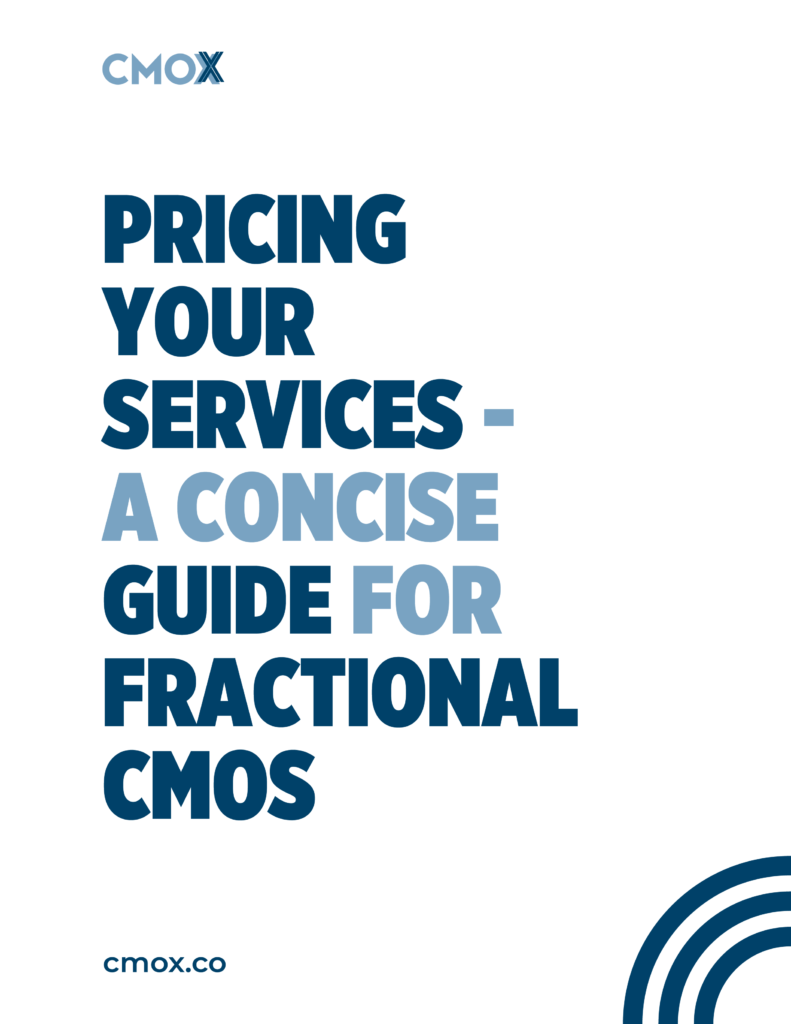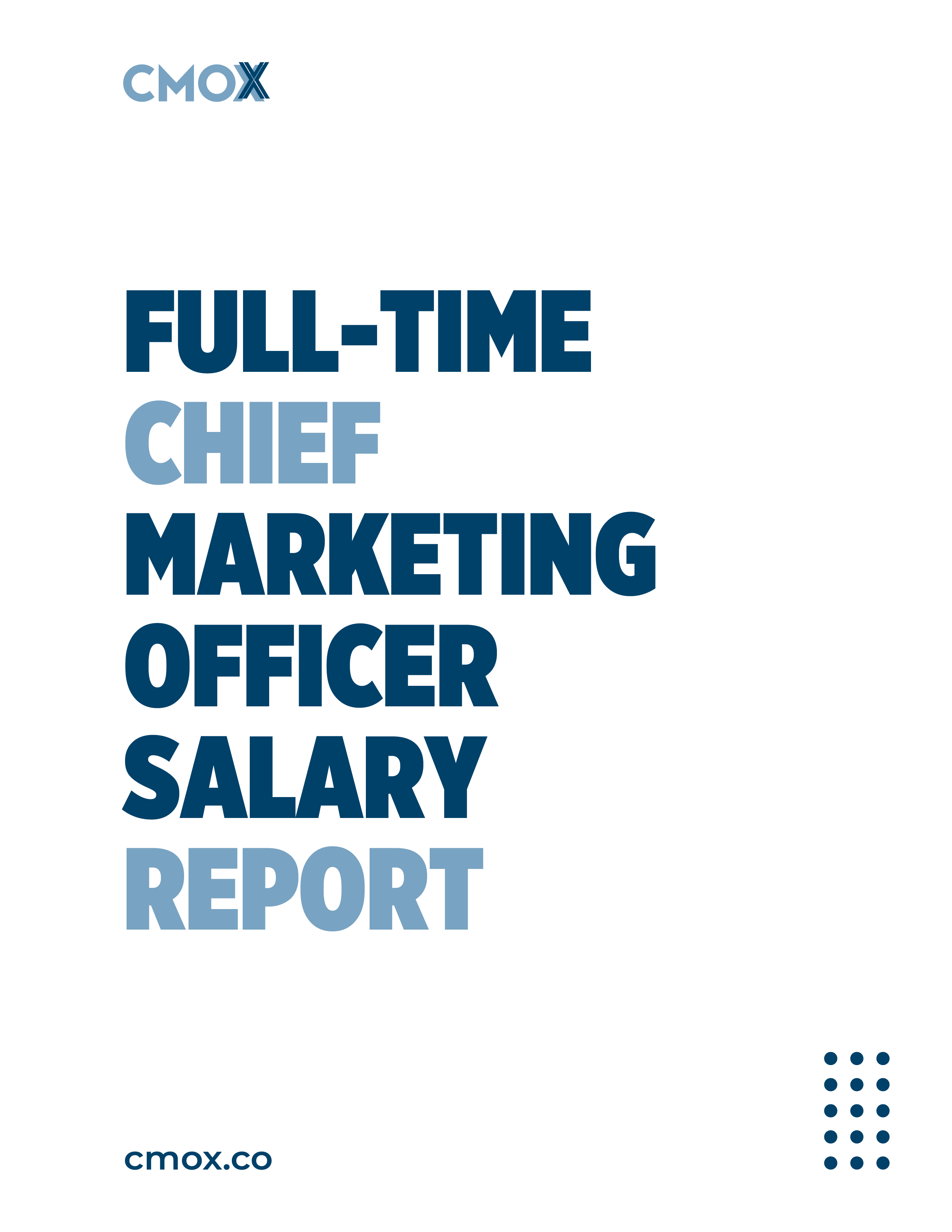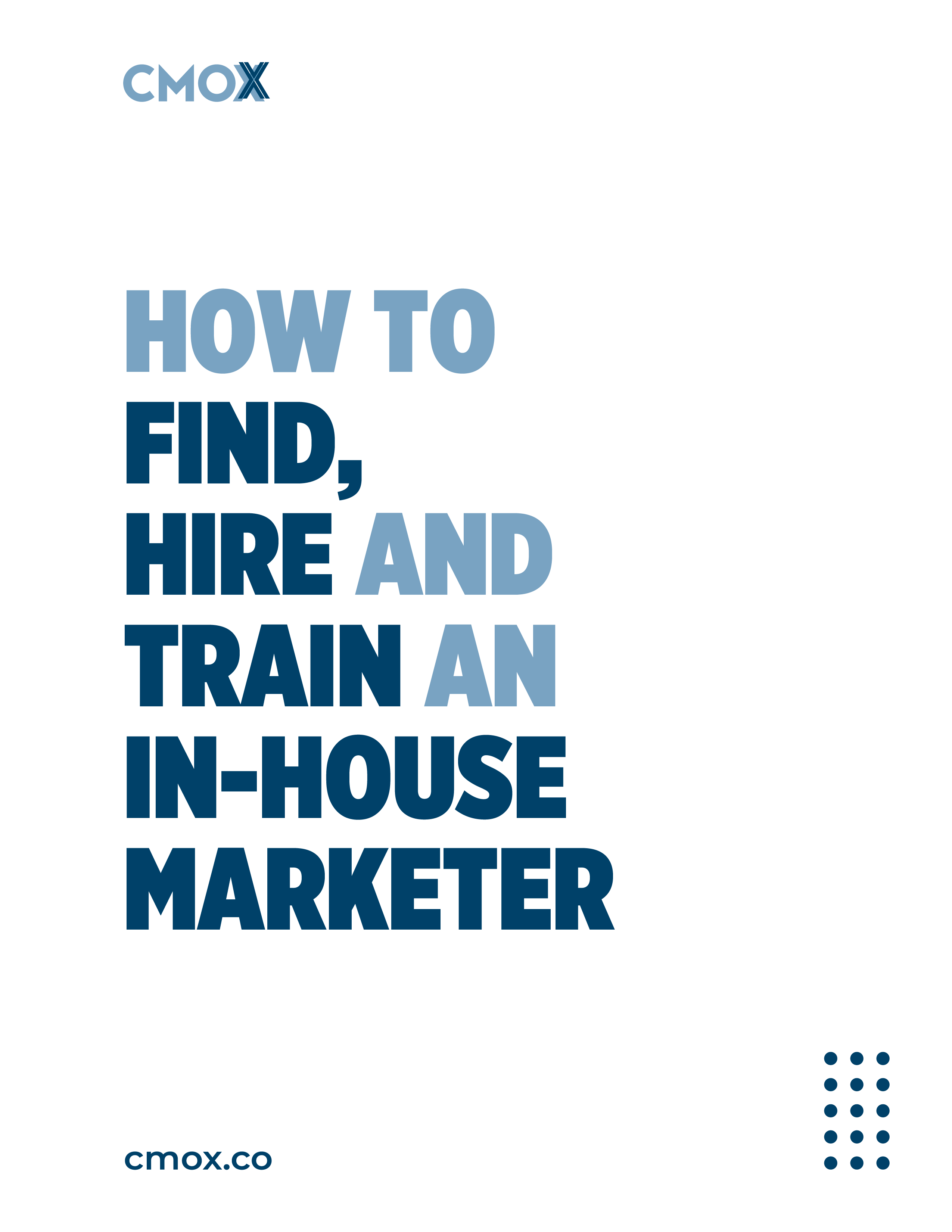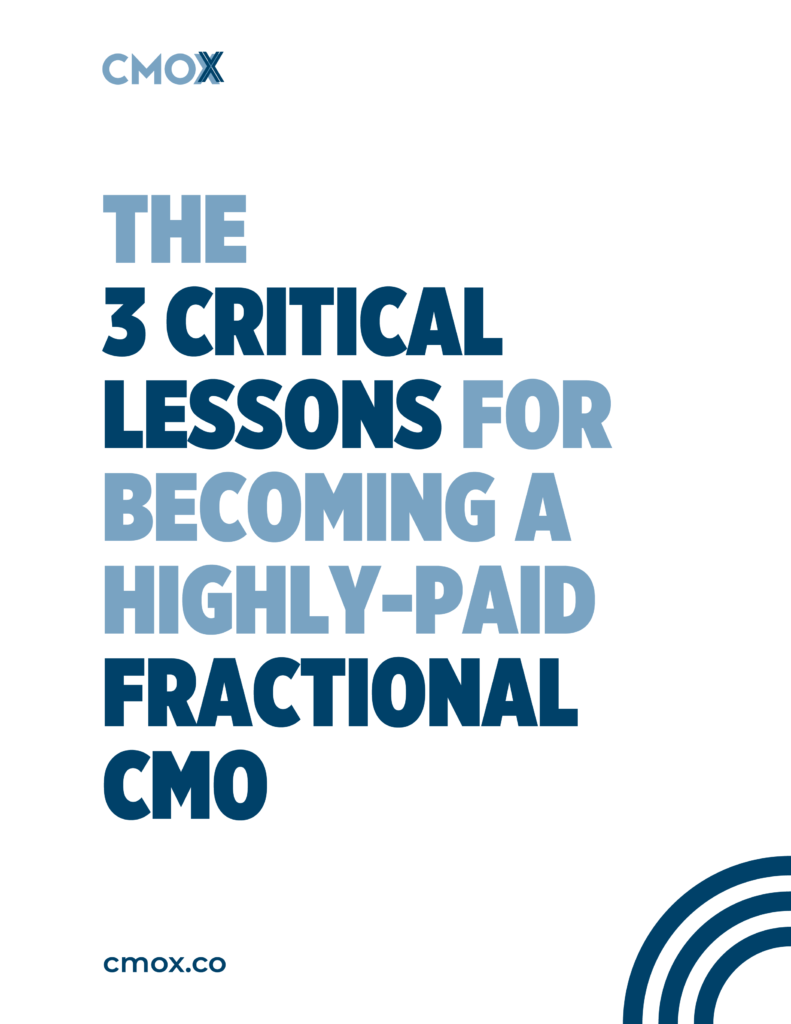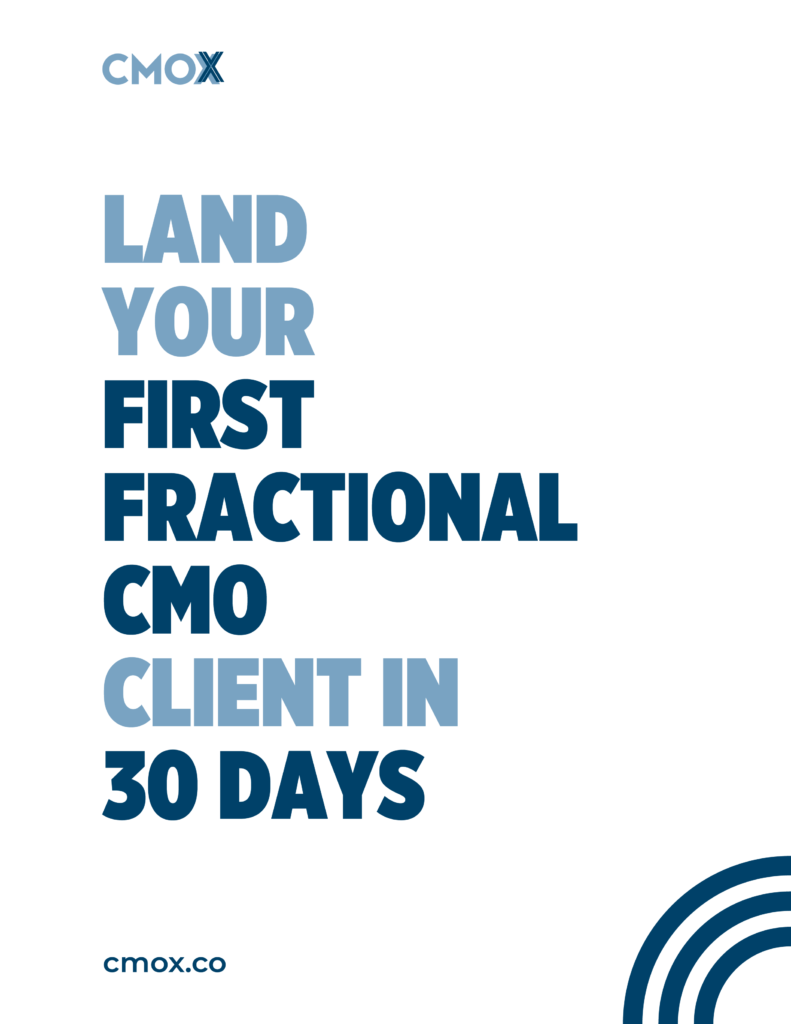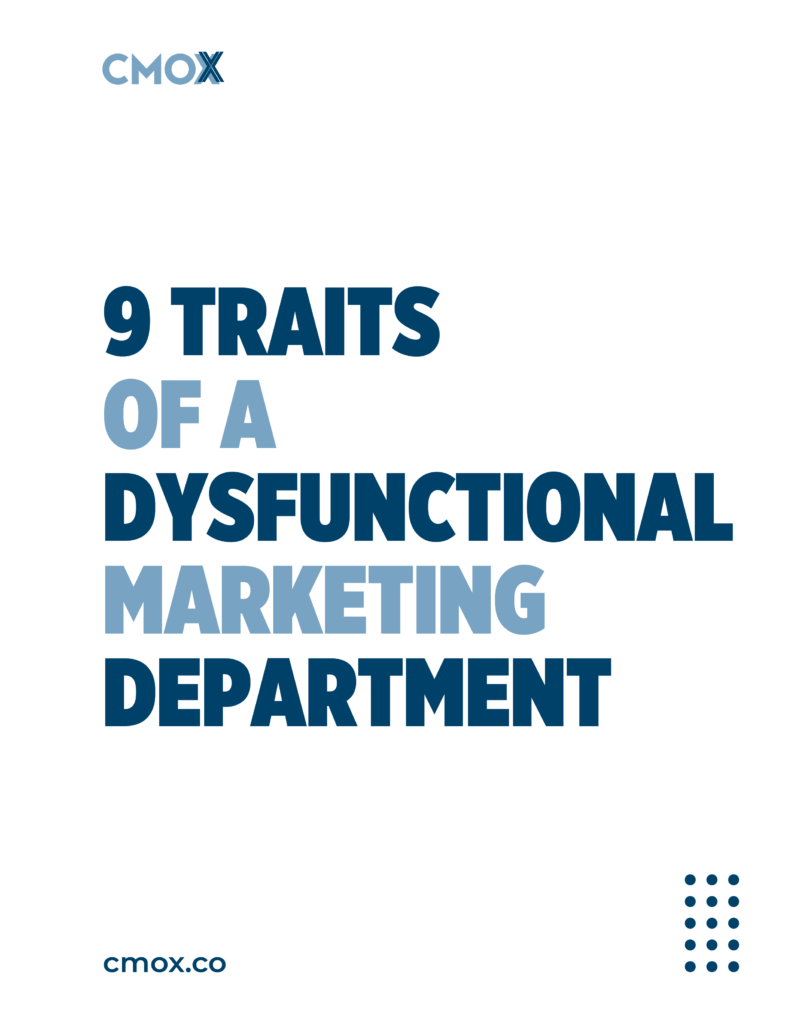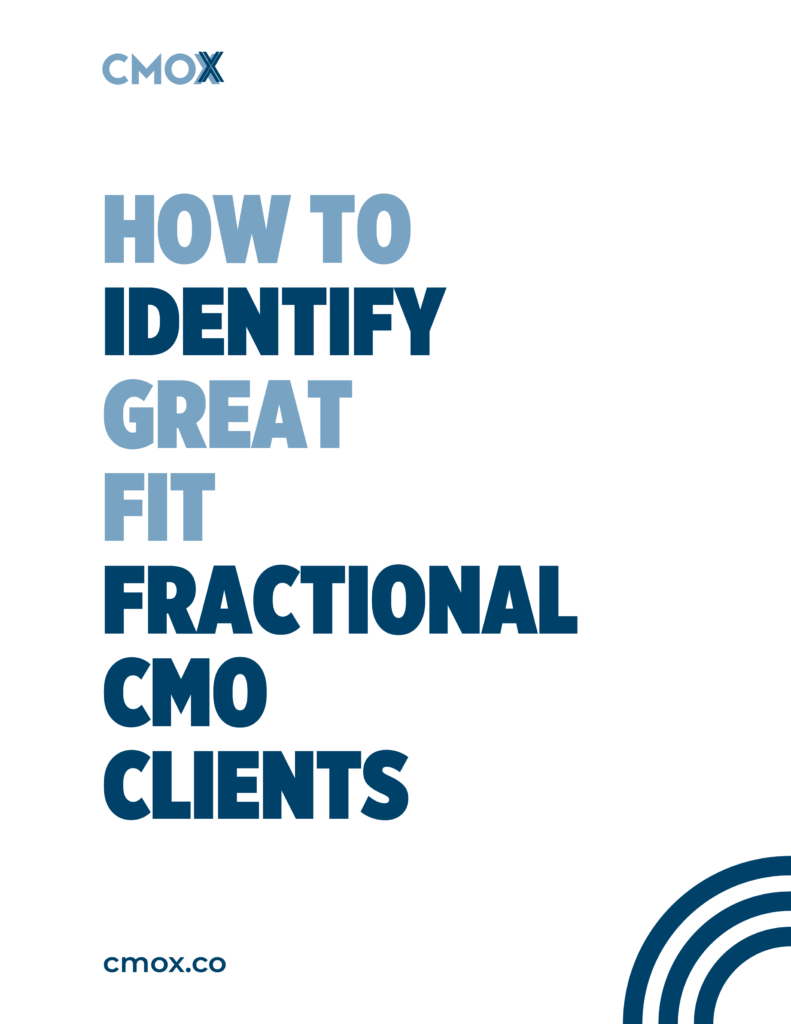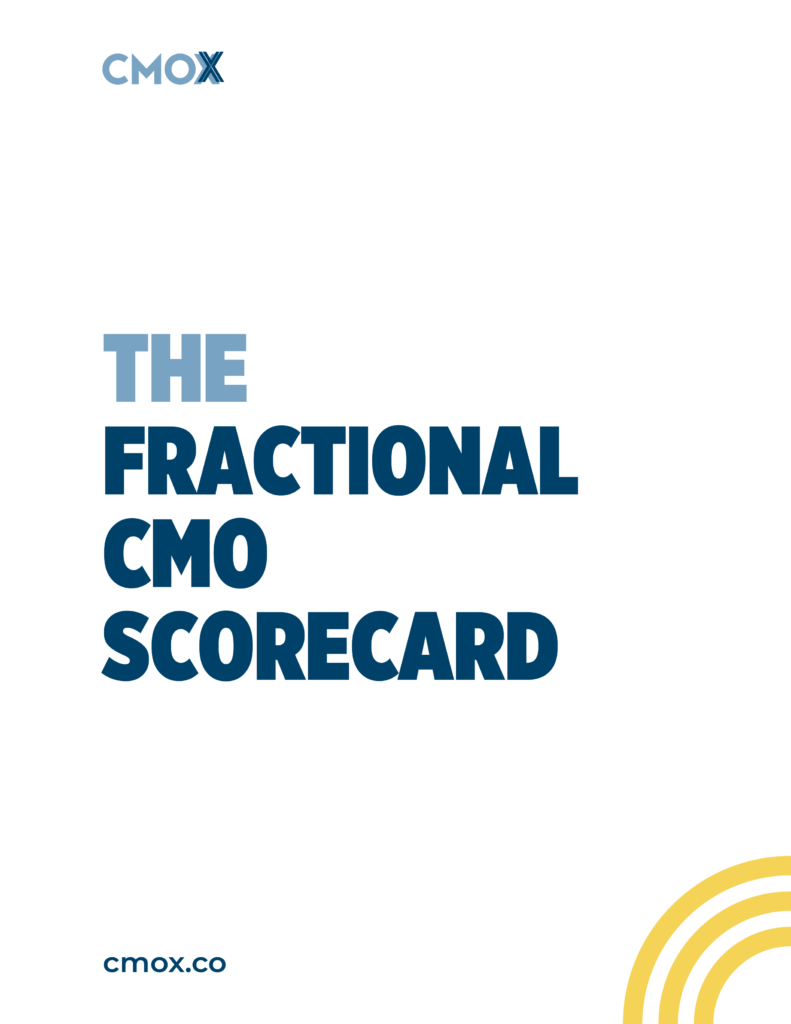The head of marketing is a title often used for a business that wants an ‘everything marketing person.’ While many other marketing department roles only involve conceptualizing, the head of marketing is also responsible for making them happen. In other words, you’re not only a thinker, you’re also a doer.
Being the head of marketing involves implementing an already outlined strategy and advancing business development. Depending on the structure of a business, the head of marketing may be directly involved in planning a strategy or also serve as the supervisor of a marketing team for said strategy.
This article explains what a head of marketing is, the typical responsibilities of this role, and how it compares to being a fractional chief marketing officer.
What is the Head of Marketing?
The head of marketing is a specific role that may also be assumed by marketing VPs, marketing directors, marketing managers, or even a chief marketing officer for some businesses. While some companies may advertise for a head of marketing position, it’s also beneficial to study job descriptions for the other roles listed.
Other marketing leadership positions—e.g., the chief marketing officer (CMO)—focus more on brand continuity, budget, and top-level strategy. The head of marketing focuses on execution and results. For instance, a CMO may ensure that all printed and digital materials align with the company’s brand, while the head of marketing ensures those materials are distributed in the right places at the right times.
What Does a Head of Marketing Do?
The head of marketing is directly responsible for every stage of implementing marketing strategies with services including:
- Developing marketing strategies
- Uncover insights to their company’s market
- Executing each marketing plan
- Measuring the effectiveness of marketing projects
- Monitoring established key performance indicators (KPIs)
- Optimizing future plans to meet broader goals
Though this wide range of responsibilities makes heads of marketing invaluable to their teams, it can also stunt the marketing department’s ability to grow or reorganize. The head of marketing can become too focused on immediate concerns to consider long-term strategy or organizational goals.
Responsibilities of the Head of Marketing
The head of marketing may oversee a wide range of marketing activities, including:
- Building strategies across marketing teams (digital, advertising, communications, and creative)
- Understanding business objectives and how to achieve them
- Creating and managing monthly, quarterly, and annual marketing budgets
- Set concrete, achievable team goals, and monitor goal progress
- Ensure brand consistency across all messaging and materials
- Analyze consumer and marketing trends
- Identify growth opportunities
- Monitor competition to optimize strategy
- Create quarterly reorganization and hiring plans
How Much a Head of Marketing Can Make
Heads of marketing in the US make an average of $123,000 per year to start. Depending on location and industry, that number may drop to around $115,000 or jump to about $140,000. The highest-paid marketing professionals—i.e., those in the best-paid areas and industries—can expect a starting salary of approximately $200,000.
Remember—these are just starting salaries, and many marketing professionals are eligible for bonuses and merit increases based on performance.
Head of Marketing vs Chief Marketing Officer
Depending on how an organization is structured, the head of marketing and chief marketing officer (CMO) positions may look very different—or they may be the same. In a company with a well-developed C-suite of executives, the CMO generally oversees and guides all aspects of a company’s marketing department, checking in with their department heads to ensure things are going well (or to address issues). They’ll also develop high-level budgets for each department, keep a sharp eye on branding to ensure compliance, and approve or help improve marketing plans.
Heads of marketing, however, are responsible for the hands-on aspects of marketing strategy and implementation. As described above, a head of marketing delegates responsibilities, checking in with team members, keeping everyone to a tight schedule and budget, and tracking analytics after each campaign. In an organization with both positions, the head of marketing will likely report to the CMO.
However, in some companies, the CMO and head of marketing are one and the same. In these cases, it’s common for a single person to take on a combination of the marketing responsibilities above and delegate the rest. For instance, they may assign budget creation to a marketing manager and review the budget after it’s planned rather than doing it themselves.
In general, the role of CMO provides more flexibility and is better positioned to focus on high-value tasks like strategy, management, delegation of marketing tasks, and hiring. CMOs are constantly thinking about the future, while heads of marketing are frequently focused on the present.
How to Become a Head of Marketing
Before becoming a leader in any industry, you need certain credentials, qualifications, and experience to prepare you to take on the necessary responsibilities. You can glean some of these skills from higher education, while others may come from practical experience or elective certifications.
Skills
The marketing industry is anything but evergreen—it’s constantly changing and evolving based on consumer trends, shifts in societal values, and many other characteristics.
To stay ahead of the curve, heads of marketing need certain concrete and soft skills, including:
- A firm foundation in web analytics, such as Google Analytics/GSC
- CRM software experience
- Experience in content marketing strategies initiatives
- Competency in Microsoft Suite or similar software
- Advanced copywriting skills
- Well-developed communication skills
- Analytical approach to problem-solving
- Detail-oriented thinking
- Leadership skills—especially strategy and goal setting
- Excellent time management skills
Experience
While some skills are innate, many can certainly be learned or developed. Robust industry experience is key to understanding the convoluted ins and outs of the marketing world. Additionally, following the right career path to becoming a head of marketing provides you with the experience needed to succeed.
Most often, head of marketing experience requirements include:
- Previous marketing leadership or management experience
- Proven track record of running successful marketing campaigns
- Bachelor’s or master’s degree in marketing, communications, or a related field
- Project management experience, including budgeting
- Hands-on experience with digital marketing, including social media and email marketing
Consider Becoming a Fractional CMO Instead
While head of marketing positions offer a degree of stability and the familiarity of working with a single company, the role of fractional CMO (fCMO) offers more freedom, flexibility, and much higher earning potential. An fCMO chooses their clients, enjoys a fast-paced career with plenty of variation, and has the opportunity to help multiple companies enhance their marketing potential.
This role also allows you to work across industries, making use of multiple areas of expertise. Meanwhile, your clients have a CMO they can call on as-needed, allowing them to have as much leadership as they require. Becoming an fCMO not only means flexibility and freedom for you, but also your clients.
Fractional CMOs focus on the highest-value tasks of marketing leadership, which are:
- Strategy
- Advice
- Management
- Delegation
- Hiring
These are the highest dollar-per-hour tasks in marketing. Expertise in these areas allows you to set a higher rate, increasing your earning potential.
Of course, none of these perks come without a trade-off. It’s crucial that fCMOs have a broad knowledge base, well-developed leadership skills, and a constant awareness of marketing trends. However, if you’re a leader in your industry with plenty of confidence and ambition, this role may be just what you’re looking for.
To learn more about whether this role is right for you, check out this presentation. If you think you have what it takes, arrange a call with us to get started.
Summary of the Head of Marketing Position
Becoming a head of marketing isn’t for the faint of heart. It involves plenty of hands-on marketing strategy, implementation, and analysis that requires the ability to thrive in a fast-paced environment. You must be flexible, strategic, and aware of constantly-changing industry trends and best practices. Attaining these skills requires years of experience—either on the job, in the classroom, or both.
Additionally, the best heads of marketing are exceptional leaders capable of motivating their teams while simultaneously holding them accountable. This balancing act requires impeccable communication skills and the ability to stay cool under pressure.
Plus, you need to be able to objectively analyze the success of each marketing campaign to continuously optimize your strategy—there’s no room to become emotionally dependent on a campaign’s success or failure.
However, becoming a fCMO may be a better fit if you’re an innovator with one eye always on the future. Rather than having their hands in every aspect of a company’s marketing efforts, fCMOs observe and guide their teams with the big picture in mind. This position makes it much easier for them to:
- Identify capacity issues
- Source and add talent to their teams
- Streamline processes to launch campaigns more quickly
- Restructure the department for better workflow
While heads of marketing thrive on building and launching campaigns, fCMOs have the power to make those campaigns more successful by developing the team creating them. Every team needs guidance to be effective, and fCMOs are ideally positioned to provide it.




